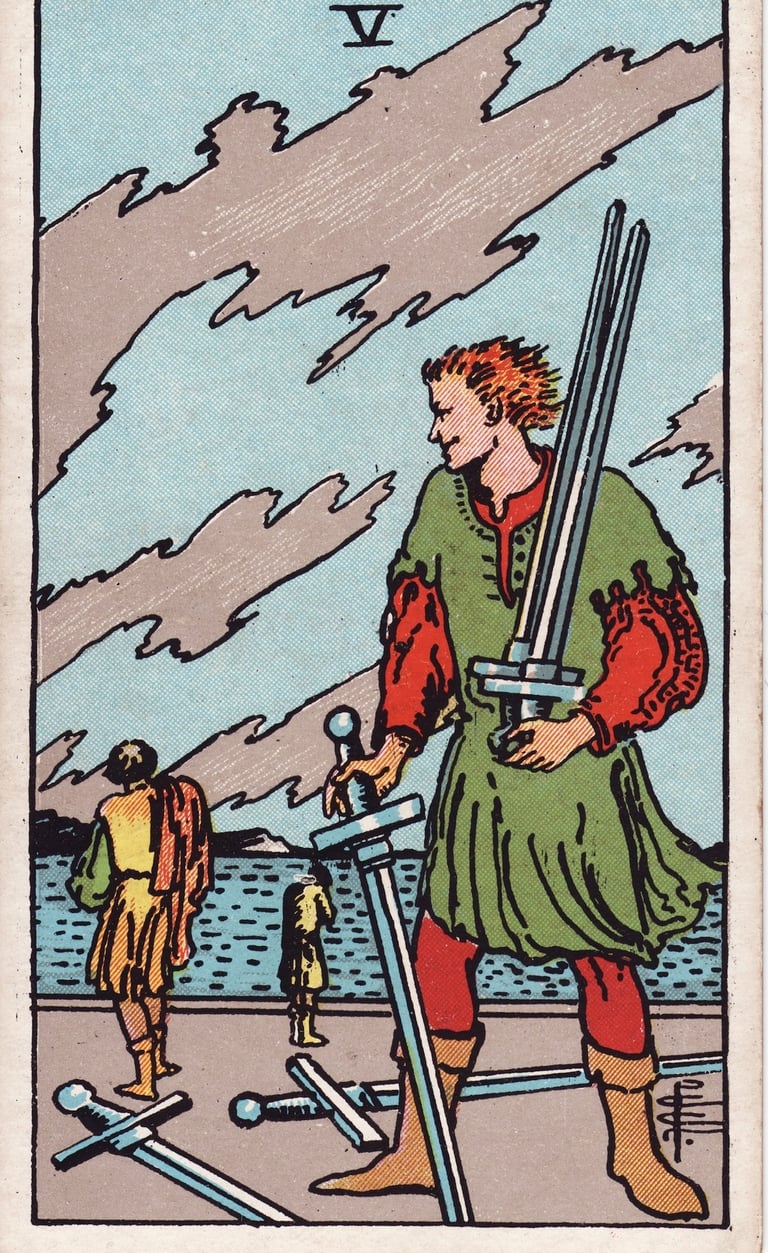FIVE OF SWORDS
The Five of Swords tarot card reflects conflict, tension, and the cost of winning. Explore upright and reversed meanings, symbolic imagery, and how to interpret this card in readings about ego, arguments, and emotional resolution.
TAROT MATRIX


Five of Swords
Keywords: conflict, tension, betrayal, winning at a cost, arguments, defeat, ego, dishonor, manipulation, power struggles
Upright Meaning
The Five of Swords upright represents conflict, tension, or a hollow victory. It often appears when ego, pride, or miscommunication leads to arguments or hurt feelings. You may have “won” a situation, but at what cost? In love, it can suggest mind games, unresolved conflict, or someone walking away from a fight. In career or personal life, it may point to competition, manipulation, or the need to reassess your motives. The Five of Swords challenges you to consider whether being right is worth damaging trust—and whether peace might serve you better than pride.
Reversed Meaning
When reversed, the Five of Swords can indicate reconciliation, regret, or a desire to end conflict. You may be reflecting on past actions, seeking to make amends, or walking away from toxic dynamics. In relationships, it suggests healing after arguments or letting go of defensiveness. In other areas, it encourages forgiveness, humility, and releasing the need to win. The reversed Five of Swords says: choose growth over grudges.
Summary
The Five of Swords represents conflict and ego—warning of disharmony and hollow victories when upright, and inviting peace, reflection, or reconciliation when reversed. It asks you to assess whether your energy is better spent in battle or in healing.
HOW TO READ
This card often shows a figure holding swords while others walk away in defeat—illustrating triumph that brings isolation, not joy. Ask: Are you creating conflict—or caught in someone else’s? What truly matters more than being right?
You can purchase this deck here.
© 2025. All rights reserved.
Tarot card images displayed on this website are based on the original 1909 Rider-Waite Tarot deck illustrated by Pamela Colman Smith under the direction of Arthur Edward Waite. These images are in the public domain and are used here for educational and illustrative purposes.

